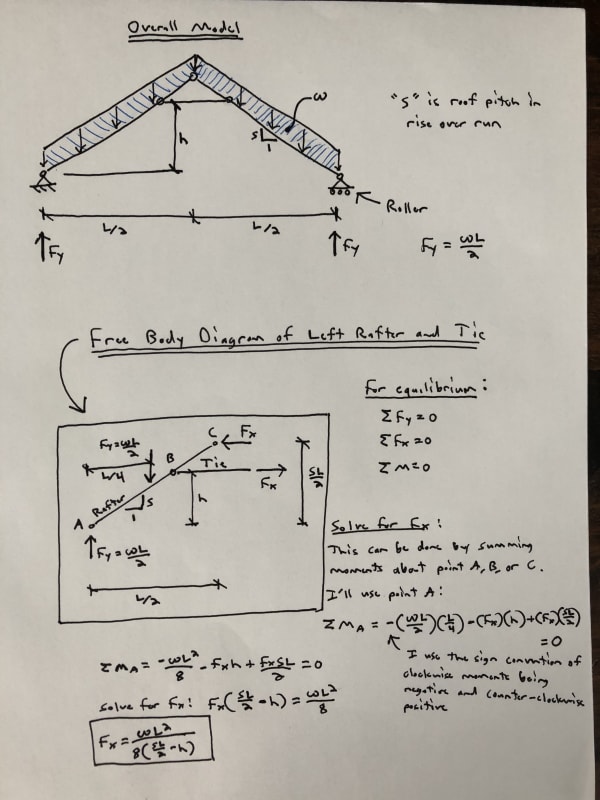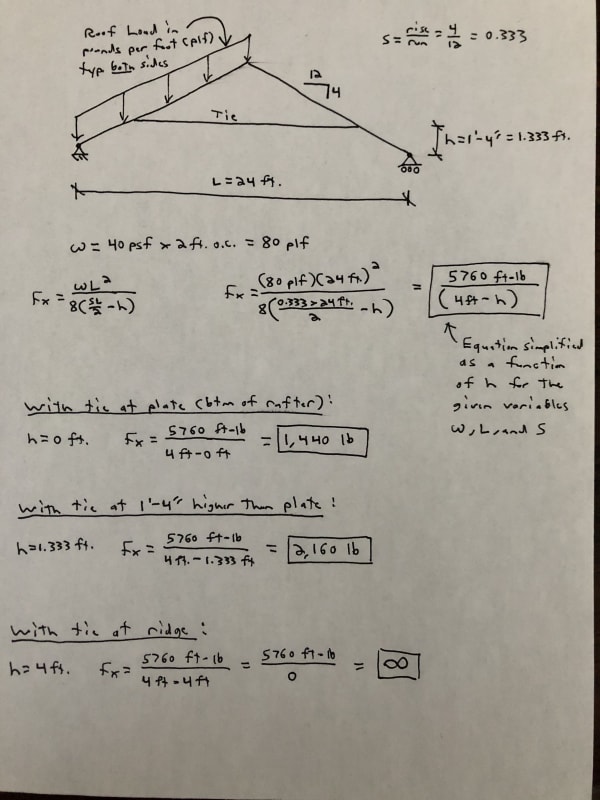I did go the RISA 2D route, it was painful. Beyond painful. I haven't done RISA in like six years and even then, with the notes i had. Not that it didn't give results, but there were so many intricacies to nail down it took nigh forever. The tie reaction was wrong, etc. etc. etc. Touch one setting and the whole model tanks with some instability error you can't find.
The tie reaction can be obtained by statics, which I did once, didn't like the formula I got, started rooting around and found the Truesdale. I haven't managed to get Truesdale and Eng16080 formulas to match yet but I didn't try too hard yet. I know the variables aren't identical, and even Truesdale seems to have junk in the formula versus normal variables (rise/run I'm looking at you).
The RISA difficulties I had started with load being too high (projected versus global Y, I guess, or some other default. I took notes in my Excel spreadsheet so I can learn from this one), so the tie force was 70% too large, I suspect given the flexibility of the framing there's second order effects a static analysis won't capture, and then it started getting into the more esoteric, with custom species for 1900s wood, custom shapes (rough sawn), and then all the weird variables dealing with unbraced lengths. It took a long time to even verify the allowable stresses RISA was shooting out, because so much of the factors are hidden with checkboxes and whatnot I had to find them. (Repetitive stress, I'm looking at you). I have a spreadsheet of my own, adapted from a previous project that wasn't nearly as goofy that could be done via hand calculation, (lower pitch though but at least the rafters and ceiling joists could meet prescriptive current code for current snow loads), collar ties, I think, or I added those, but the purlin braces were down to the ceiling joist, not the interior wall. So I was trying to get it to work and/or verify RISA.
Mine is a building that's survived for about 100 years as it was built, but it doesn't math out very well. It's one of those projects that starts, goes dormant, starts again.... I know we (Eng-tips) get into these perennial conversations about raised rafters/collar ties, over and over. Every conversation seems to start from zero, also. We're on the second building official now, also. The first one moved on.
It's a long story.


